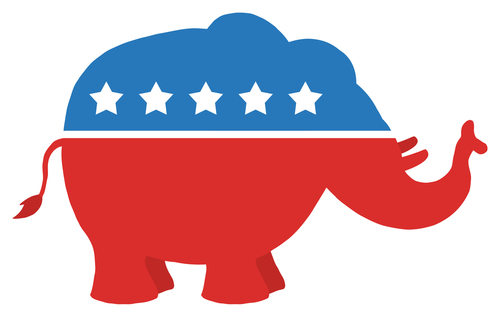This blog is a adjusted transcript from our podcast, The Economic Impacts of the Next Presidency.
Let’s maybe talk through those and talk through what you’ve seen. And I’ve read a bunch, too. Let’s talk through that and we’ll talk about what that really means and kinda pick apart some of those details. So, as you kinda went through what are some of the main things that sorta jumped out to you?
First, just as a matter of the tone of Donald Trump’s tax plan, his slogan is “Making America Great Again”. It’s this idea that we’ve lost jobs overseas, that American businesses are going elsewhere and that in order to make America great again, that starts with bringing jobs back, creating jobs, making the economy much stronger than it is. So, when you delve into some of the points that he makes, in terms of his tax policy, you can see that that’s sorta the objective.
And of course, we’re pulling this information off of his Web site, DonaldJTrump.com, if you’re curious as to check those out, but he kinda summarizes his tax ideas nicely. He breaks it down into four points.
The first one is: “Tax relief for middle-class Americans.” And, kinda like you were saying a minute ago about everything being calculated, I think that is a calculated move, to list that one first. Of course, we’re trying to appear to the largest segment of the population which is the middle class, and all of that, so he simplifies it by saying, “In order to apply to the American Dream, the idea is to let people keep more of their earnings and to increase their after-tax wages.”
One of the ways he proposes to do that, which is point number two, is to simplify the after-tax code. Instead of having seven separate tax rates, he wants to simplify that down to four. For instance, the lowest rate would, of course, be zero percent. Basically, the idea is if you’re single and make less than $25 grand a year or, if you’re married and make less than fifty, jointly, you pay nothing. It’s one of those, “Hey, I made less than this threshold, therefore, I pay nothing.” That’s all ya need to do to file your taxes. The next rate is ten percent, for 25 to 50 for individuals, 50 to 100 for married people. And twenty percent’s next, and twenty-five percent for top people. And right now it’s 30–almost 40. So that’s helpful, but most people are like–“Okay, if you lower the tax rates, then you’re going to have less tax revenue.” Is that true?
I think his philosophy would be, “Yes, we’re lowering the tax burden of the individual, but by giving people the ability to have more money in their pocket[s], they’re going to spend more, businesses are going to create more jobs, there’s going to be a greater population-base to tax, so each individual pays less, but because more are paying into the system, the net revenue that comes from taxation’s actually greater.”
For most people, that’s kinda hard for them to chew on, right? But, if you go back to the last massive tax hike was–I think it was 1986 or 1988, right around there, during the Reagan times–and you look at what they did. They actually dropped a lot of the tax brackets. But they got rid of a lot of the itemization, write-offs… and the revenue actually went up. There was more. Taxes actually increased by decreasing the brackets.
Because you look at this and, even right now, just because the top rate–the top tax bracket is 39.6, the federal rate, it doesn’t mean that there aren’t any deductions, right?
Why do corporations pay–or even have a negative? It’s really because they take advantage of the tax code and they put money here and here and here which the government now allows them to get a credit or reduce, just from their taxable income.
So the idea of lowering brackets doesn’t mean the tax revenue is going to go down. The idea is, number one, is that it’s going to put more money in the pockets of those making 25 to 50. I would even argue that because, right now, people between 25 and 50 thousand dollars really don’t pay that much in taxes, anyway, because of all the deductions that take place.
Now, let’s maybe circumvent that and go to the higher guys. Let’s go to some of the corporate tax. I found this was very, very interesting. He says, “No business of any size, from a Fortune 500 to a mom-and-pop shop to a freelancer, living job-to-job, will pay more than fifteen percent of their business income in taxes. This lower rate makes corporate inversions unnecessary by making America’s rate the best in the world.”
So the idea is if we make America’s tax rate one of the best in the world, the friendliest for businesses, there’s zero incentive for them to go elsewhere. Let’s explain this a little bit.
There’s an entirely separate corporate tax bracket. So if you own a hundred percent of a corporation, and you’re an employee in the corporation, right? You have to pay taxes on a corporate level and you have to pay taxes on any income that you took from it. So it’s kind of double taxation.
If your corporation made a million dollars, then you’re going to pay 25% corporation tax. Money that you took out, you’re also going to have to pay taxes on. So, basically, what he’s saying is he’s going to drop corporate tax rates to a very low amount. Fifteen percent. Right now it’s like fifty.
This has a few notable ramifications. First, you’re gonna have corporations that can now spend their money. They can invest, they can put money in infrastructure, they can expand the workforce, right? And, ultimately, that money that they spend, has the same impact on the economy.
These days, things are becoming more and more efficient because of technology, so now you’re able to produce that at a much cheaper rate, maybe for the economy. And all that money’s going to cycle into the hands of the workforce and, then, they’re gonna go out and spend it and it’s gonna cycle through the economy.
Essentially, you have more people with money. Hopefully, they’ll save more. They will spend more, right? But, hopefully, they’ll also save more, reducing their ultimate dependence on the government in the future.
Second, it gets businesses to come back to America. The idea is for those corporations that have gone overseas, or that have gone outside the country because of the unfavorable tax environment that we’re currently in, we’re discouraging them from staying here. He creates a system whereby they’re able to come back. And he tries to create a friendlier environment for that to happen. I think he said that there’s a one-time tax rate that they can come back for, ten percent.
One last item on Donald Trump’s tax ideas. He did talk about the death tax, the estate tax.
He’s basically saying he’s eliminating the death tax. That’s basically the summary. It talks a little bit about kinda the mindset behind that: according to the Trump tax plan, he thinks that the death tax punishes people for saving and creating wealth and wanting to pass it to the next generation. Just the idea that it’s fundamentally unfair to a family who has worked hard and saved and wants to benefit the next generation. So that death tax would be eliminated completely.
Alright, where is that money going to go? It doesn’t go into the hands of those wealthy people ‘cuz they’re gone. Who’s hands does it go into? It goes into the kids’ hands. What are the kids going to do with it? Are they going to spend it? Who knows what that behavior is going to be like, but if you look at the debt burden that kids have these days, whether it’s with school or the lack of employment (because the Baby Boomer generation’s not retiring because they don’t need money). So it’s one of those things that money gets passed on. So that’s another way money will cycle through society.
So that’s the basic rundown of the Trump tax policy. How does it stack up with Hillary’s? Click here to read our comparison of Trump’s plan to what we know about Hillary’s.








